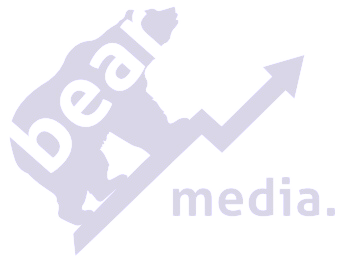Is digital advertising just a sliver of the expansive digital marketing galaxy, or does it shine brighter than all the rest? As the digital landscape evolves, business owners face the challenge of choosing strategies that will best connect them with their target audience while enhancing their online visibility. This article unravels the complexities of digital advertising and digital marketing, providing insightful distinctions between the two. By understanding these critical differences, small and medium business owners aiming for explosive online growth can craft precisely targeted approaches that yield remarkable success. Dive in to discover which strategy suits your brand's unique journey.
Defining Digital Advertising and Digital Marketing
Digital marketing is a comprehensive term encompassing all promotional activities conducted online to engage potential customers. It includes strategies like search engine optimisation (SEO), content marketing, and social media marketing, which aim to build a brand's visibility and reputation over time. This broad approach utilises various digital channels and electronic devices, enabling businesses to connect with their audiences through tailored content and engaging experiences. By leveraging these methods, brands can foster long-term relationships and drive organic growth.
Digital advertising, on the other hand, is a focused subset of digital marketing, specifically centred on paid methods to promote products or services. It primarily involves pay-per-click (PPC) campaigns, display ads, and video advertisements, aiming for immediate visibility and results. This strategy utilises platforms such as Google Ads and Facebook Ads to reach targeted audiences with precision, often delivering short, impactful messages designed to capture attention quickly. By investing in digital advertising, businesses can achieve rapid engagement and measurable results, complementing broader marketing efforts.
Key tools and platforms:
- SEO: Enhances website visibility in search engines.
- Content Marketing: Engages audiences with valuable, relevant content.
- Social Media Marketing: Builds brand presence on platforms like Instagram and Twitter.
- PPC: Targets specific audiences through paid ads on search engines.
- Social Media Ads: Utilises platforms like Facebook and LinkedIn for paid promotions.
Key Differences Between Digital Advertising and Digital Marketing
Digital advertising is a concentrated effort under the larger umbrella of digital marketing, primarily focusing on paid strategies to promote products and services. It involves creating targeted campaigns through platforms like Google Ads and Facebook Ads, designed to achieve quick visibility and immediate engagement. The essence of digital advertising lies in its ability to deliver concise, impactful messages to specific audience segments, often through pay-per-click (PPC) advertisements, banner ads, and sponsored content. These campaigns are generally time-bound and measured by their ability to drive instant results, such as clicks and conversions.
Digital marketing, in contrast, encompasses a wider range of activities and strategies aimed at building a brand's online presence over time. It includes techniques such as search engine optimisation (SEO), content marketing, email marketing, and social media management, which are designed to engage audiences and foster long-term loyalty. Unlike the immediate focus of advertising, digital marketing strategies are ongoing and iterative, requiring continuous research and adaptation to meet evolving consumer needs and preferences. Through these efforts, businesses aim to establish and maintain a strong digital footprint, enhancing brand recognition and customer relationships.
When comparing digital advertising and digital marketing within a business strategy, it is evident that they serve complementary roles. Advertising offers a direct and measurable approach to achieve short-term goals, such as sales and lead generation, through targeted campaigns. Conversely, marketing strategies focus on building a sustainable brand image and nurturing customer engagement over the long haul. Both elements are crucial, and their integration can lead to a more cohesive and effective overall strategy, allowing businesses to leverage the benefits of immediate results alongside sustained growth.
Strategic Differences
The strategic execution of digital advertising and digital marketing varies significantly. Advertising strategies typically involve precise targeting and budget allocation to maximise immediate impact and return on investment (ROI). These strategies are often data-driven, with clear performance metrics that guide adjustments and refinements. In contrast, digital marketing strategies are broader and more holistic, focusing not only on attracting new customers but also on retaining existing ones through value-driven content and community engagement. The outcomes of these strategies are measured over longer periods, with success indicators including brand awareness, customer satisfaction, and loyalty.
Integrating Digital Advertising with Digital Marketing Strategies

Integrating digital advertising with broader digital marketing strategies offers significant advantages. By leveraging the immediate reach and precision targeting of digital advertising, businesses can drive substantial traffic to their websites or landing pages. This quick influx of potential customers can then be further engaged through digital marketing techniques such as personalised email campaigns, informative blog content, and interactive social media engagement. This combination not only maximises visibility but also nurtures relationships, leading to higher customer retention and loyalty. The synergy between these elements provides a comprehensive solution that enhances brand presence and optimises return on investment, creating a competitive edge in the digital landscape.
Successful integration strategies often involve using digital advertising to capture initial interest and digital marketing to sustain and deepen that engagement. For example, a business might run a targeted Facebook ad campaign to promote a new product launch, directing users to a landing page designed with SEO principles. Once visitors arrive, they can be engaged with compelling content, such as tutorials or user testimonials, and encouraged to subscribe to a newsletter for exclusive updates. This approach not only capitalises on the strengths of each method but also aligns marketing efforts with consumer behaviour, ensuring a seamless journey from awareness to conversion.
| Strategy Aspect | Digital Advertising | Digital Marketing |
|---|---|---|
| Objective | Immediate visibility | Long-term engagement |
| Focus | Targeted campaigns | Comprehensive brand building |
| Measurement | Clicks and conversions | Brand recognition and loyalty |
| Budget Allocation | Short-term expenditure | Ongoing investment |
Real-World Examples and Case Studies
Case studies serve as valuable tools for understanding the practical application of digital advertising and marketing strategies. They provide insight into how different approaches can be tailored to achieve specific business goals. By analysing real-world examples, companies can gain a clearer picture of the potential strengths and weaknesses of each strategy within various contexts. These case studies demonstrate best practices and innovative solutions, offering guidance on how to effectively implement digital advertising and marketing initiatives in a way that aligns with organisational objectives.
Examples from existing case studies are instrumental in guiding businesses on how to allocate resources efficiently. By examining successful integrations of digital advertising and marketing strategies, organisations can identify key factors that contribute to achieving desired outcomes. This understanding can help businesses avoid unnecessary expenditures and focus their efforts on tactics that yield the highest returns. Effective resource allocation, informed by these examples, ensures that both digital advertising and marketing efforts are optimised for maximum impact.
A retail brand used a combination of Google Ads and SEO to improve website traffic and sales.
A tech company leveraged social media ads and content marketing to boost brand awareness and lead generation.
A travel agency integrated PPC with influencer marketing to increase bookings during the holiday season.
- An e-commerce platform combined Facebook Ads with email marketing to enhance customer retention and repeat purchases.
Career Paths in Digital Advertising and Digital Marketing
In digital advertising, career opportunities primarily revolve around campaign execution and management. Roles such as Digital Advertising Manager, PPC Specialist, and Media Buyer are pivotal in creating, launching, and optimising ad campaigns across various platforms like Google Ads and Facebook Ads. These positions require a strong understanding of analytics, audience targeting, and budget management. Professionals in digital advertising are tasked with driving immediate results through precision-targeted strategies, focusing on metrics such as click-through rates and conversions.
Digital marketing careers, however, are more strategically focused, encompassing broader responsibilities like brand development and long-term planning. Roles include Digital Marketing Manager, SEO Specialist, and Content Strategist, each playing a crucial part in building a brand’s online presence and fostering customer engagement. These positions demand skills in strategy formulation, content creation, and cross-channel integration to ensure cohesive marketing efforts. The emphasis here is on nurturing relationships and enhancing brand loyalty over time, using tools like email marketing, social media engagement, and search engine optimisation.
While digital advertising and digital marketing careers have distinct focuses, they share several overlapping skills and competencies. Both fields require analytical thinking, proficiency with digital tools, and the ability to interpret data to inform decisions. Additionally, creativity and adaptability are essential in responding to changing market trends and consumer behaviours. Understanding the differences and commonalities between these careers can help professionals choose a path that aligns with their interests and strengths, allowing them to thrive in the dynamic landscape of digital promotions.
- Digital Advertising Manager
- PPC Specialist
- SEO Specialist
- Content Strategist
- Social Media Manager
Final Words
Demystifying the distinctions between digital advertising and digital marketing reveals critical insights
for strategically reaching target audiences.
Digital advertising is a concentrated approach using paid methods such as PPC,
whilst digital marketing incorporates a broader scope, including SEO and content strategies.
The integration of both avenues offers substantial business advantages,
highlighted through practical examples and real-world success stories.
Understanding career paths in these fields also demonstrates the diverse opportunities available.
Appreciating the nuances between digital advertising and digital marketing empowers businesses,
enabling them to devise comprehensive strategies for capturing market share effectively.
FAQ
What is the difference between marketing and advertising?
Digital marketing is a broad term that includes all online promotional activities, while digital advertising focuses specifically on paid methods such as pay-per-click and video ads.
Is advertising a part of digital marketing?
Advertising is indeed a part of digital marketing, serving as a component that utilises paid strategies to reach targeted audiences.
What is considered digital advertising?
Digital advertising includes paid online methods designed to attract visitors, such as banner ads, social media advertisements, search engine ads, and video ads.
Is digital media and digital marketing the same?
Digital media includes all forms of online content, while digital marketing is a strategic approach that involves promoting products or services through various online channels, including digital media.
Digital advertising vs digital marketing examples.
Digital advertising examples: pay-per-click (PPC), social media ads.
Digital marketing examples: SEO, content marketing, email marketing.
What are digital marketing and advertising salaries like?
Salaries vary widely based on roles, experience, and location. Generally, digital marketing roles like SEO specialists or content managers may earn differently compared to specific advertising roles such as PPC managers.
What digital marketing and advertising courses are available?
Courses cover topics such as SEO, social media marketing, PPC, content strategy, and analytics, helping individuals gain skills needed for digital marketing and advertising roles.
How do digital marketing and advertising jobs differ?
Digital marketing jobs focus on strategy and brand development, whereas advertising roles centre on campaign creation and execution. Both require digital proficiency and understanding of the industry.

